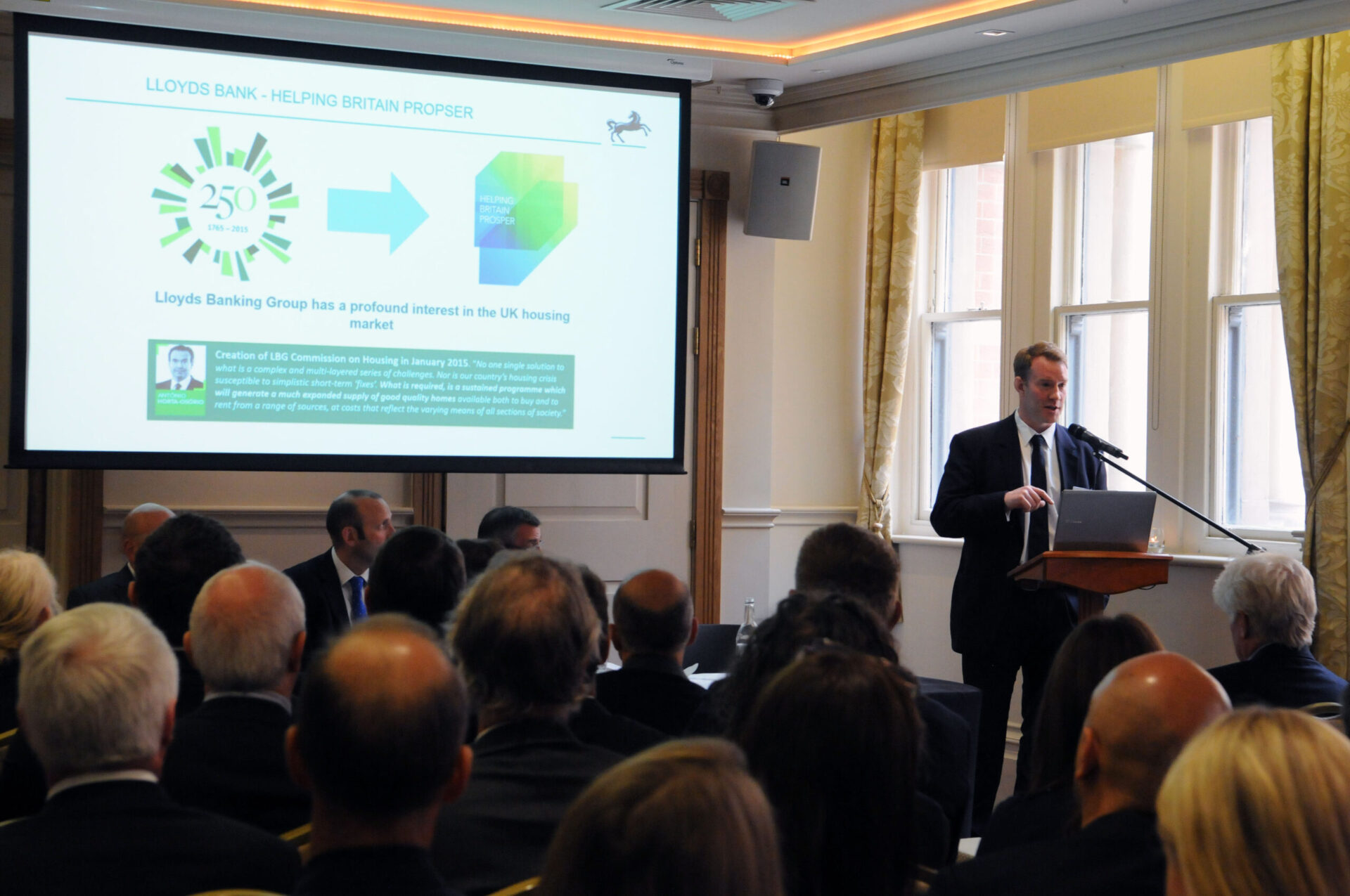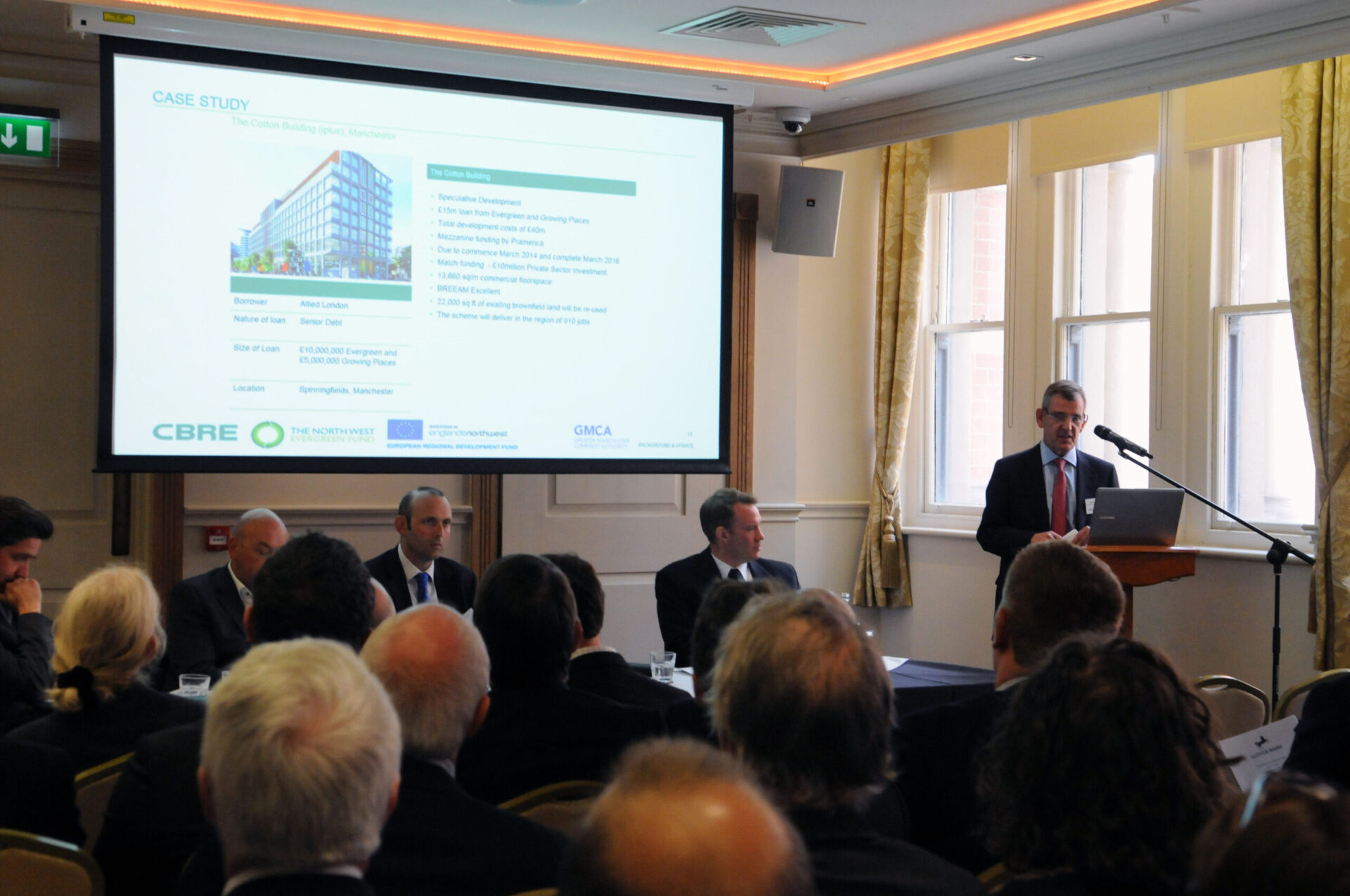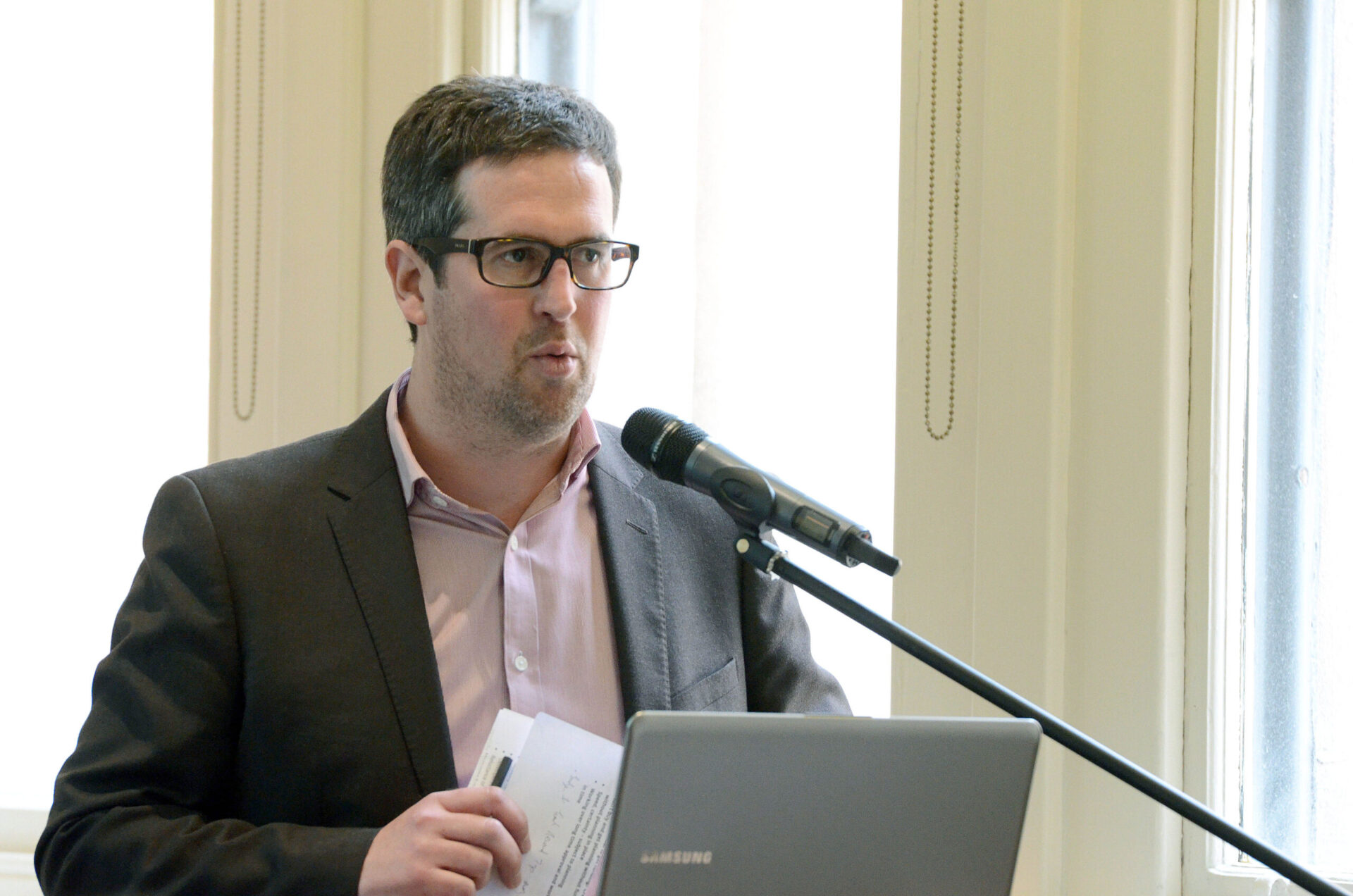Event Summary
Development Finance Lunch: Summary, Slides + Pictures
 Lloyds Bank’s SME team has agreed £100m of facilities with North West developers so far this year, according to Glen Wilson, head of property at Lloyds Bank.
Lloyds Bank’s SME team has agreed £100m of facilities with North West developers so far this year, according to Glen Wilson, head of property at Lloyds Bank.
Speaking to a packed room of developers, agents and advisors at the Place North West development finance lunch at Albert Square Chop House sponsored by Lloyds Bank, Wilson gave an overview of the ways in which the bank was “committed to supporting the UK housing sector and SMEs”.
See image gallery and slides below
Wilson and his team review and assess development funding across the North West commercial and residential markets, with a focus on smaller developments in the secondary market, typically costing from £2m to £20m.
According to Wilson, the bank expected to lend £2.1bn this year. In the North West alone Lloyds currently holds a debt book of £492m, with £100m of facilities agreed so far in 2015.
Speaking about the event, David Brigden, senior manager of North West property at Lloyds Bank Commercial Banking, said: “It was fantastic to be able to sit down with a mix of the region’s property professionals, consultants and developers to share some of the recent projects that we have been involved in, and discuss market outlook for H2.
“We were able to update the sector on our lending progress during 2015, which has seen us arrange more than £100m of new facilities, including £31m during May and June alone, which is all part of Lloyds Bank’s ongoing commitment to the North West property sector, which plays a vital part in the health of our local economy.
“The event was oversubscribed, and we received some excellent feedback from the delegates – so it’s something that we’re looking to repeat with Place North West.”
Presenting the view of public sector funding was Bill Enevoldson, chief investment officer for the Greater Manchester Combined Authority and administrator of the Greater Manchester Investment Fund.
Enevoldson outlined the funding pot being managed as of 31 March 2015, with £85m in business funds and around £115m for property and infrastructure, divided between the £55m Growing Places fund and the £60m Evergreen fund.
The next phase of funds are currently in the process of being established from the 2014-20 European Regional Development Fund allocation, with £97m to be directed into successors to the existing Evergreen and North West Fund, alongside the creation of a dedicated Low Carbon Fund.
Enevoldson said that for those wishing to access finance, it was the speed of funding which was the advantage. A response could be expected from the investment team within 48 hours of the first expression of interest, while a final decision would be made within eight weeks.
“The lending is focused on jobs, the terms are user-friendly and the price is cheaper than the banks,” Enevoldson said. In particular, Evergreen and Growing Places are about “providing funding where traditional finance cannot be obtained”, working in tandem with other forms of funding.
Projects that have been supported by Greater Manchester’s property and infrastructure fund include Allied London’s XYS office which is currently under construction in Spinningfields, which received a £15m combined loan from Evergreen and Growing Places.
Following their presentations, Wilson and Enevoldson were joined for a panel discussion by Eian Bailey, managing director of Keyworker Homes; Nick Lee, managing director of NJL Consulting, and William Church, director of CBRE and fund manager for Evergreen on behalf of the Greater Manchester Combined Authority.
Keyworker Homes recently secured a £5m Lloyds Bank loan to support the latest phase of redevelopment at the Blue Zone at Macclesfield Hospital into accommodation and offices for medical staff.
“The market was falling and falling and we were chasing it down,” Bailey explained. “We were doing a truly mixed-use scheme, and between us and the NHS were working to make it viable. The site included NHS uses, listed buildings, affordable housing, and a Morrisons supermarket. The scheme was a success but the problem was funding coming through. During that time, the backbone of the business was supported by Lloyds, and that kept us going.”
According to Bailey, “the housing market is where it’s at” for SME developers. “We currently have 34 housing plots coming out of the ground at Macclesfield”, he said. “However it is taking three months to see mortgage completions come through, the process is taking longer so we need to adapt the cash flow to allow for that.”
As the fund manager for Evergreen, William Church outlined the criteria for lending, and described Evergreen as “there to lend where the banks won’t, or won’t lend the full amount.”
“When we went live in 2011 the schemes ready to lend to were the big developments. However in the next few years we expect to be lending to less prime schemes, with a loan size of between £2m and £12m. The message is, we will be flexible.”
The profile of the projects had changed in recent years, Church said: “The schemes we’ve lent to would have attracted a pre-let in days gone by. Now we’re finding that it’s only once the scheme has secured funding that potential occupiers start to take it seriously.”
When asked about whether it was company trading record or experience that was more important to the bank when it came to lending, Wilson said that Lloyds considered each application on its own merits and that “if there’s a deal to be done we will support that”.
According to Enevoldson, the combined authority was “more interested in the track record of the management rather than the business.” Enevoldson said that a viable deal could become clear very quickly: “Around 95% of what we’ve invested in we’ve known after the first meeting.”
A member of the audience asked Nick Lee of NJL how far viability assessments were playing a part in planning for schemes. Lee said that it was dependent on the development, and while the expectation should be that smaller brownfield sites would come through quickly, in fact many planners were still experiencing delays from councils.
“Viability is being used in the wrong way by some local authorities,” said Lee. “Since the changes to the NPPF were brought in the emphasis is to approve as much as possible, however the national mind-set shift in response to this has been variable.”
Despite the challenges presented by the planning system, both Lloyds’ Wilson and Enevoldson were cautious when asked about the prospect of lending to a project without planning permission in place.
Wilson said: “As a rule we wouldn’t lend without planning permission, but we aim to understand other options.” However Enevoldson was firmer. “To lend without planning is a gamble, the planning process being what it is.”
Other questions from the audience included how far low carbon was a priority in public sector programmes, whether permitted development rights on schemes were an attractive funding proposition and the current status of the retail occupier market.
- To view Glen Wilson of Lloyds Bank’s presentation click here
- To view Bill Enevoldson of GMCA’s presentation click here
Click image to launch gallery























With regard to viability assessments, maybe the planning delays are more to do with greater awareness of developers gaming the system and inviting greater scrutiny of their viability assessments rather than local authorities misinterpreting or misapplying the NPPF.
By Corporate Welfare Watch